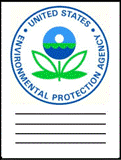United States Environmental Protection Agency

United States Environmental Protection Agency: Publications
Document Type
Article
Date of this Version
2014
Citation
Basic & Clinical Pharmacology & Toxicology Doi: 10.1111/bcpt.12239
Abstract
A significant challenge in toxicology is the ‘too many chemicals’ problem. Human beings and environmental species are exposed to tens of thousands of chemicals, only a small percentage of which have been tested thoroughly using standard in vivo test methods. This study reviews several approaches that are being developed to deal with this problem by the U.S. Environmental Protection Agency, under the umbrella of the ToxCast programme (http://epa.gov/ncct/toxcast/). The overall approach is broken into seven tasks: (i) identifying biological pathways that, when perturbed, can lead to toxicity; (ii) developing highthroughput in vitro assays to test chemical perturbations of these pathways; (iii) identifying the universe of chemicals with likely human or ecological exposure; (iv) testing as many of these chemicals as possible in the relevant in vitro assays; (v) developing hazard models that take the results of these tests and identify chemicals as being potential toxicants; (vi) generating toxicokinetics data on these chemicals to predict the doses at which these hazard pathways would be activated; and (vii) developing exposure models to identify chemicals for which these hazardous dose levels could be achieved. This overall strategy is described and briefly illustrated with recent examples from the ToxCast programme.


Comments
This article is a U.S. government work, and is not subject to copyright in the United States.